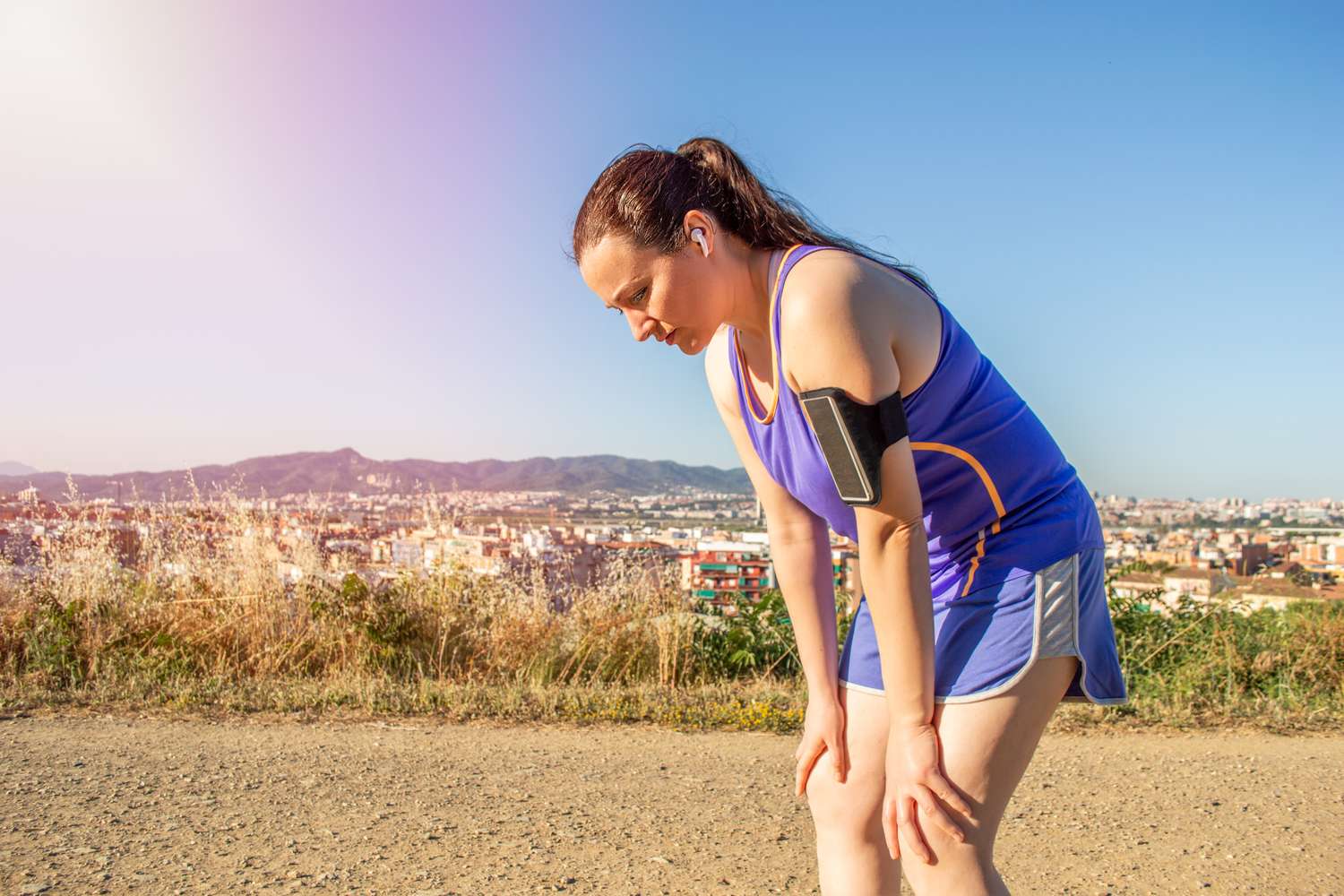The heat can make outdoor workouts uncomfortable and, in severe cases, dangerous. If you’d like to maintain your activity levels during extreme heat, consider working out at a slower pace or switching to water-based exercises.
1. Swimming
Swimming is a great way to stay cool while getting a good workout, Jordan Boreman, MS, CES, XPS, ACSM CPT, FMS, an exercise physiologist at the Cleveland Clinic, told Verywell.
Swimming laps is a good cardiovascular workout, as it strengthens your heart and lungs and can help your body temperature stay healthy on hot summer days.
2. Running, but Slower
There’s no reason you can’t go for a run on a hot day as long as you’re paying attention to how your body is feeling.
“When it’s really hot, you could still run, you just have to run at a slower pace,” Alicia Jamison, NASM-CPT, a board-certified health coach and adjunct professor of exercise physiology at Brooklyn College, told Verywell
She added that you may start panting quicker than you would while running in mild weather. Once the temperature reaches 103 degrees Fahrenheit, you’d be more proned to cramps and heat exhaustion.
“Heat just makes everything more intense,” she said. “You can do whatever kind of workout you want, you just have to bring the intensity down about 15 to 20%.”
“If running is too much, a long walk would do the trick, particularly with an umbrella,” Jamison said. “When in doubt, it is better to move your workout indoors than to experience heat exhaustion or heat stroke.”
3. Kayaking
Kayaking can be a great way to get in a workout on a hot and humid day, Boreman said.
Kayaking is an aerobic workout that also serves to strengthen muscles. You don’t have to be fully immersed in water to cool down—just getting splashed by your kayaking partner or your paddling can help you stay cool in extreme heat.
4. Paddleboarding
Like kayaking, paddleboarding is a water-based activity and, as such, is a great workout that can help you avoid overheating in summer, Boreman said.
It has been tied to increased aerobic and anaerobic fitness and even increased quality of life.
5. Biking
If you feel a breeze during a bike ride, this may help you stay marginally cooler than if you did a stationary workout outside.
Jamison said it’s important to remember that your internal temperature will rise during these activities, and you may need to take extra measures to stay cool on particularly hot days.
Safety Tips for Exercising in Hot Weather
“In general, it is important to make sure you are hydrating throughout your workout and taking breaks as needed to avoid excessively elevated heart rates or body temperatures,” Alyssa Hardgrove, PT, DPT, AT, ATC, a physical therapist and athletic trainer at The Ohio State University Wexner Medical Center, told Verywell.
“Workouts that should be avoided in the heat include new or prolonged workouts at high intensities,” she added. “Seventy percent or greater of your max heart rate indicates that you are getting into higher intensity activity.”
Jamison said it’s also important to wear sunscreen (or carry an umbrella if you’re walking) to avoid sun damage.
Lastly, inviting a friend along on an outdoor run or bike ride can help you stay safe on hot days. They could potentially help if you start experiencing signs of heat-related illness.
Warning Signs of Heat-Related Illness Everyone Should Know
People with certain medical conditions are at higher risk of heat-related illness when working out outside.
“Anybody with a respiratory or cardiovascular disorder, I would take heed,” Jamison said.
Hardgrove said anybody can suffer from heat-related illness. She added that everyone should be aware of the two main conditions in this category.
These include:
Heat exhaustion: This causes heavy sweating, dizziness, nausea, and fatigueHeat stroke: This causes confusion, loss of consciousness, lack of sweat, and rapid pulse
“While heat exhaustion is not as severe as heat stroke, it is still important to get to a cool environment and start rehydrating to resolve symptoms and prevent progression to heat stroke,” Hardgrove said.
What This Means For You
Any outdoor workout can be adapted for hot weather days, but some activities may be more enjoyable than others during the summer. No matter what kind of outdoor workout you do, staying hydrated and monitoring your body for signs of heat-related illness is important.
Verywell Health uses only high-quality sources, including peer-reviewed studies, to support the facts within our articles. Read our editorial process to learn more about how we fact-check and keep our content accurate, reliable, and trustworthy.
Racinais S, Alonso JM, Coutts AJ, et al. Consensus recommendations on training and competing in the heat. British Journal of Sports Medicine. 2015;49(18):1164.
Schram B, Hing W, Climstein M. The physiological, musculoskeletal and psychological effects of stand up paddle boarding. BMC Sports Sci Med Rehabil. 2016;8:32. doi:10.1186/s13102-016-0057-6
Johns Hopkins Medicine. Heat-related illnesses (heat cramps, heat exhaustion, heat stroke).

Thanks for your feedback!
What is your feedback?
Helpful
Report an Error
Other

